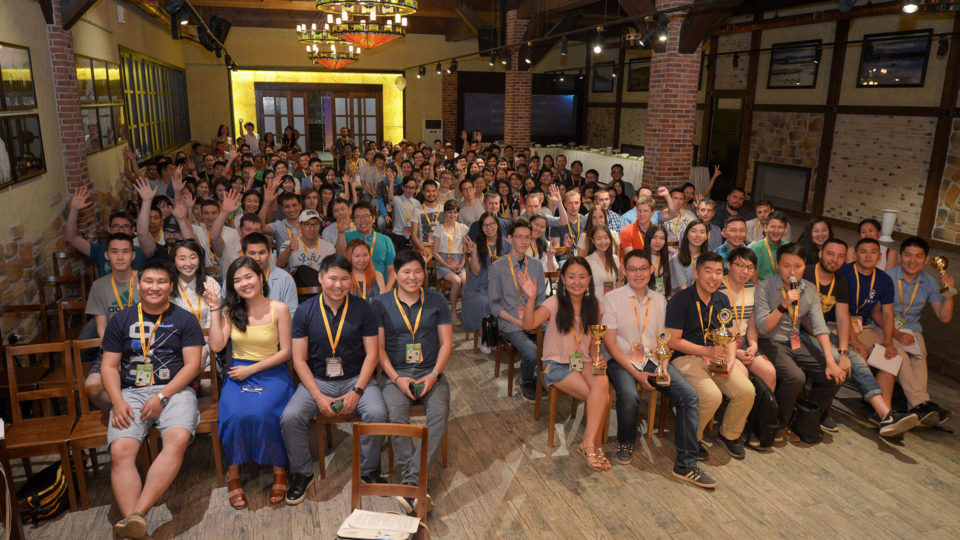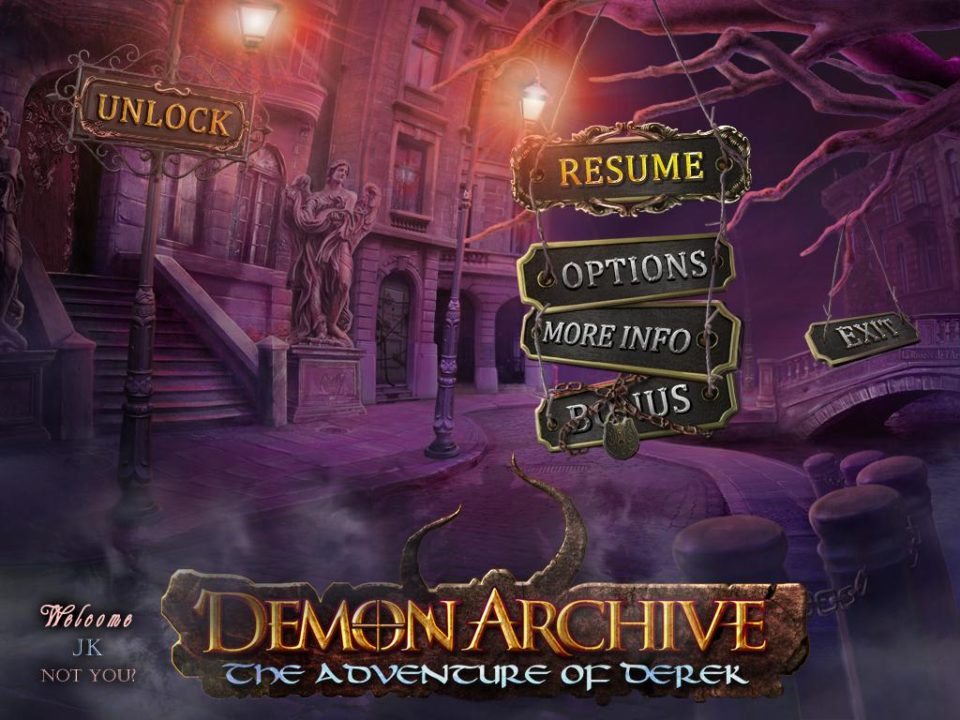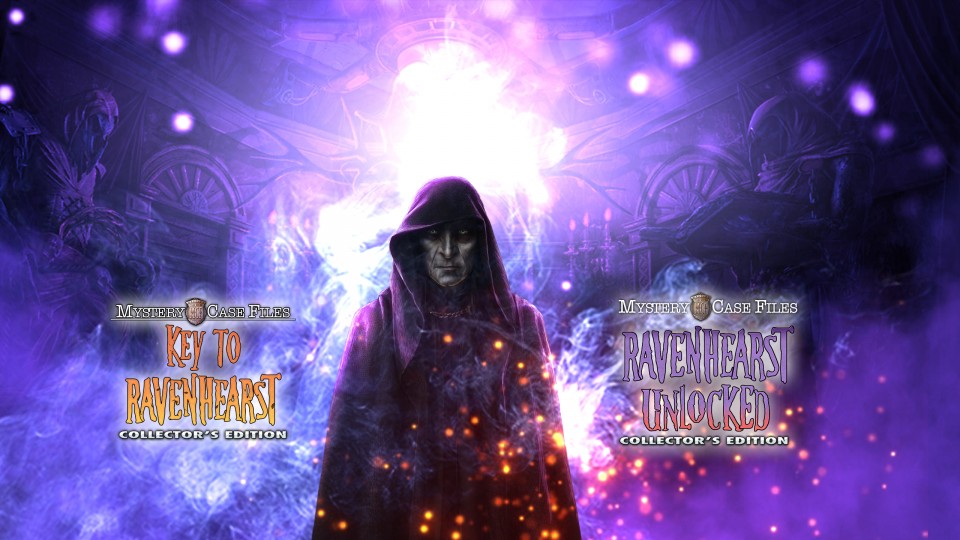Diana Platonova is the Business Development Manager at MyTona, an international free-to-play games developer and publisher, where her main goals are increasing MyTona’s business growth and widening its branding. In her Casual Connect Asia talk Diana shared tips and tricks of bringing a Hidden Object game to Top 20 Grossing, with the example of MyTona’s title Seekers Notes: Hidden Mystery that climbed the chart up to Top 20 Grossing for US iPad. One of here tips was: “We target offers by special filters, so that each player gets what’s most suitable for them.”
main
ContributionsDevelopmentGame DevelopmentIndieOnlinePostmortem
Demon Archive: Recurrence of Dr. Faustus and Fantastic Elements
Founded in 2014, La Calade Games is merely composed by the couple at the beginning. As a player of roleplaying games, co-founder and CEO Shirley Cheng was excited to see so many hidden object games with amazing animations and stories on iPad during 2012. She remembers her first time playing these games on iPad: being really impressed, especially when the games were inspired by some classic works. One day Shirley’s husband saw her playing those hidden object games and wondered why she was so obsessed with them. Eventually he realized those were truly interesting, and considered making one, since he’s always had a dream to make his own game. Shirley tells more of the story of the award-winning game that has been honored for Best Narrative at Casual Connect Asia 2016.
ContributionsDevelopmentGame DevelopmentOnlinePostmortem
Mystery Case Files: The Making Of a Two-Headed Monster
Eipix Entertainment is a game development studio based in Novi Sad, Serbia. Founded in 2005 by a small group of friends, today it is a home to about 300 people. With the current output of 25 hidden object puzzle adventure (HOPA) games a year, it’s safe to say it is the most productive HOPA studio in the world, with its sights set on branching out into other video game genres.
ContributionsGame Development
The top 5 practices of running a virtual game studio by Boomzap Entertainment’s Gabby Dizon
Boomzap Entertainment is a game developer that creates casual games for the PC, Mac, Wii, iOS, and Android platforms. It is behind some of the most successful hidden object puzzle adventure (HOPA) games such as the Awakening series, the Dana Knightstone series, Otherworld: Spring of Shadows, and Botanica: Into the Unknown. Registered in the USA and Singapore, Boomzap has 70 developers based in Singapore, Japan, the Philippines, Malaysia, Indonesia, Russia, Ukraine, and Georgia. Boomzap producer Gabby Dizon lines up some of the most important practices that keep the Boomzap Entertainment’team happy and their virtual game studio running smoothly.
There are plenty of benefits to having a virtual office. For Boomzap Entertainment, it has enabled us to recruit the best game developers from pretty much anywhere in the world. We also have minimal overhead, which makes sure that the company is very financially lean and can weather tough times in the game industry.
However, not everyone can imagine how to make a virtual studio work. Boomzap has been virtual since day 1 in 2005; it seems hard enough with five people, let alone seventy (our head count at the end of 2012). In the past seven years, we’ve evolved and tweaked our practices as the company has grown. Here are our top five practices that help us run our virtual studio efficiently:
1. Company culture is priority #1
While this is true of all companies, it is even more important in a company where none of you see each other face to face and everybody interacts with everyone else from behind a computer interface. Having a shared company culture ensures that people are aware of the company’s goals, and are going in the same direction with their individual contributions.
2. Real-time team interaction is the key to successful projects
A key to Boomzap’s success with online teams is having a chat client with a team room function. For years this was done over MSN, the only popular instant messaging (IM) client with a persistent team function. Groups were organized by projects and disciplines so that people were interacting in real time with the teams they were involved in. Team members can also jump in and out of groups depending on project assignment or interest. The company has since moved its IM to HipChat, but the principles stay the same. The company also moved its documentation from Microsoft Office to Google Docs to allow real-time collaboration of documents by team members.
3. Have constant, immediate feedback on yesterday’s work
Boomzap has two iron laws: Daily reports (each team member posts a daily report on work done for that day, for everyone to see) and daily builds (all projects have a new build every single working day, no exceptions). Because of this setup, the team can immediately know if someone is contributing slower than expected or if there are problems in the games being developed. The game is also constantly being tested by the team members to make sure that the daily build is fun and bugs are immediately seen and reported. The daily builds are also sent out to our publishers, so they know at any point in time the progress of our projects.
4. Invest in the right tools
Are you managing your virtual team completely by email? If so, you are probably doomed to fail. Boomzap has a wide range of different tools (some free, some paid) to ensure that people are working together productively. These range from: IM (HipChat for team chat, Skype for voice calls), Basecamp (project management), Google Docs (real-time document collaboration and task tracking), SVN (code repository), Dropbox (asset repository), and our own file server to host our daily builds. Don’t be afraid of paying for online tools if the financial rewards of the team’s success far outweigh the tool’s cost.
5. Meet up once in a while

While we love working virtually from anywhere in the world and will never have a centralized office, Boomzap team members like to meet up once in a while for coffee, lunch, or the occasional big meeting where people fly in to talk about important projects in the company. The founders (one lives in Japan; the other, Singapore) regularly take the time to fly out to the different cities where the team members are based, to get to know everyone on a personal level. This social, personal interaction reaps dividends when the team goes back to working virtually on an everyday basis.
Video Coverage
Allan Simonsen on the Advantages and Challenges of the Virtual Office
Why a Virtual Office?
Simonsen and Natsuume created Boomzap for a simple reason: to provide employment for the two of them. However, the plan was complicated by the fact that Simonsen was living in Singapore, Natsuume was in Seattle, and neither was interested in moving. When they hired their first employee, Ben, who was living in Malaysia, they had a company of three in three different countries. The obvious answer was a virtual office.
The result of the decision to keep their office virtual was a better company that continued to grow. They were able to hire outstanding people in different countries who could work from home, allowing them an improved quality of life. Many of these people came with experience, but they had become disillusioned with the video game industry because of the long hours and the effect that was having on their family life. “There is a point when you’re about thirty, you’re married, you have a kid and the idea of spending 80 hours in the office suddenly doesn’t feel so tempting anymore,” says Simonsen. Boomzap offered them the opportunity to continue working in an industry they loved from the comfort of their homes, allowing them greater family time. Over time, the company expanded into a number of teams that feel an internal, independent loyalty to the members of the team. Simonsen and Natsuume now are responsible for setting goals and mentoring the teams, but they do not micromanage, or even directly manage them. And as Simonsen says, “That’s fascinating, watching these guys kind of take our ideas, or one of them, and make it into their own.”

Running a Successful Virtual Office
Running a virtual office is relatively easy. There are a number of small issues resulting from differences in cultures, but there are no large ones. According to Simonsen, he does not have to worry about managing his staff; they tend to do the managing themselves.
The key to running a successful virtual office is trust. “The biggest thing is you have to trust people,” says Simonsen. “Then you have to trust yourself that you did the right thing in hiring them and to do that you have to be very rigorous about the hiring process. And then once you’ve done that, you have to get the hell out of their way.” The hiring process for Boomzap takes two weeks from beginning to end. At the end of that time, the prospective employee will have something significant to add to a portfolio, whether or not he is hired, and Boomzap will have a good idea how the employee will fit in the company.
The work space is critical in a successful virtual office. You need an area that will allow you to focus and also let those around you know you are working and must not be disturbed. It is also important to be sure you are focusing on work during your work time, not on other things such as the TV, music, a game console, etc. Or, you may have your computer open, but if you also have MSN or Facebook open, you will not be fully focused on your work. The other side of the problem with working from home is making sure work does not take over all your time simply because it is always there. You have to know when to end your work or you will burn out working 80 or 100 hours a week.

The work space is such a critical issue that one of the standard interview questions is “Describe your work space. Do you have a quiet place to work? Do you have a good internet connection?” It is very common for people to imagine that having a table in the living room is a good work space, but it is actually almost impossible to focus in that situation. Simonsen often recommends his own setup: a room with a large Boomzap sign on the door. When he closes it, his family knows he must not be disturbed.
At Boomzap, they continue to work toward streamlining and improving the process involved in game creation, knowing that these improvements add efficiency throughout the entire virtual office. These improvements include looking at how to make better tools for artists, speed up the development process, and make things easier for programmers and artists. Each improvement in process and tools multiplies over the number of employees using them, allowing huge growth for the company.
The biggest challenge Boomzap has had is the same problem all small companies have: cash flow. Even if you have a project with real commercial value, if you can’t meet payroll that month, you can’t go forward. They have combined internal funding with partnering, and have found success in meeting this challenge. Recently they have found that partnering with Big Fish has given them a more predictable cash flow.
Simonsen tells us that at Boomzap they are very happy doing what they do now: making games they love for people who appreciate them. They hope to continue doing so for the foreseeable future.













